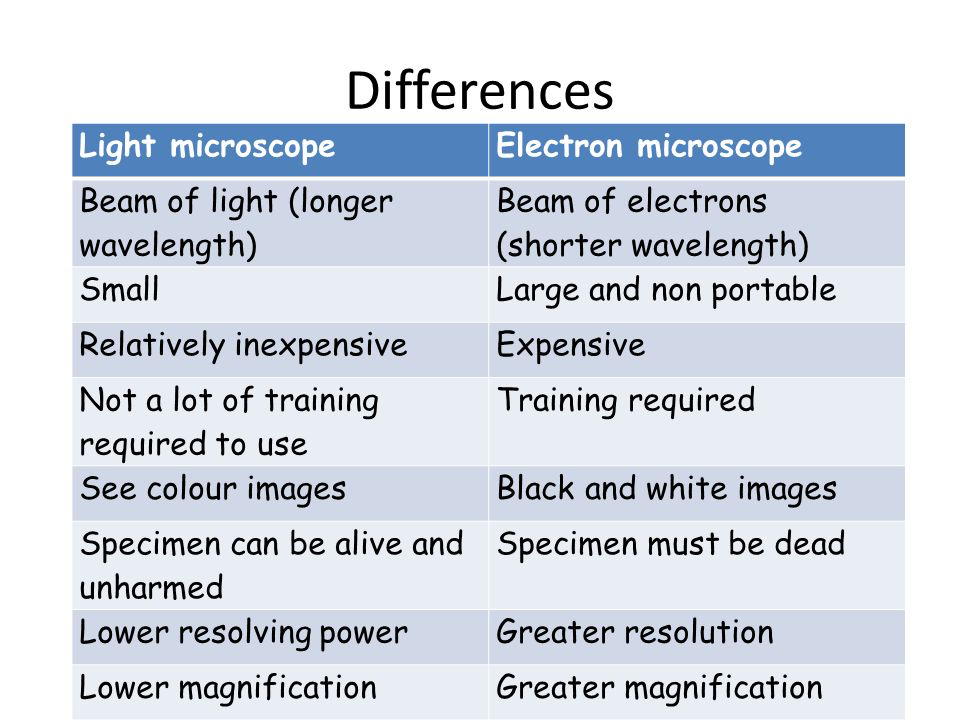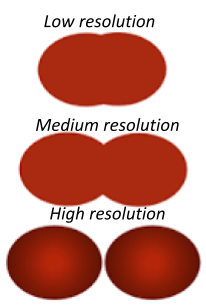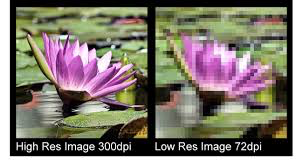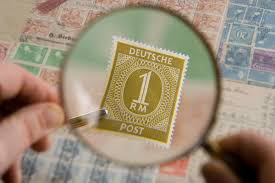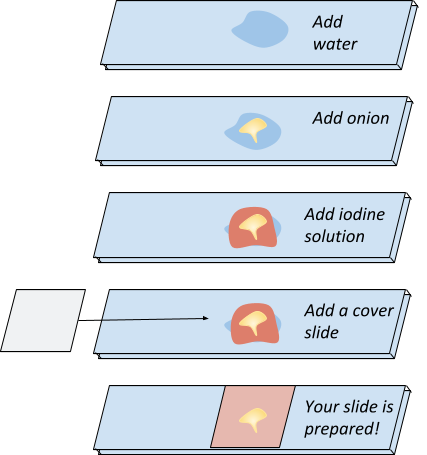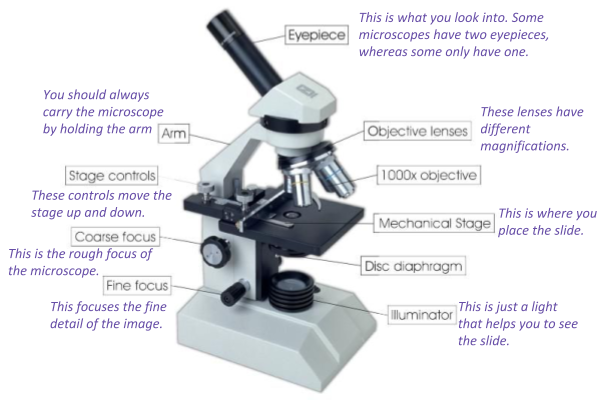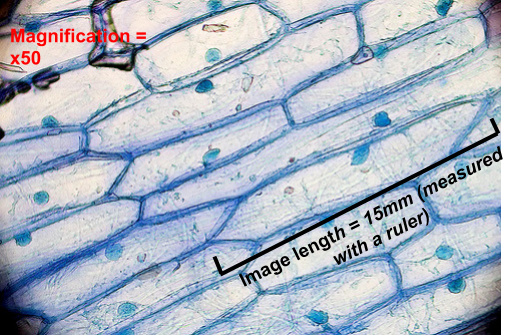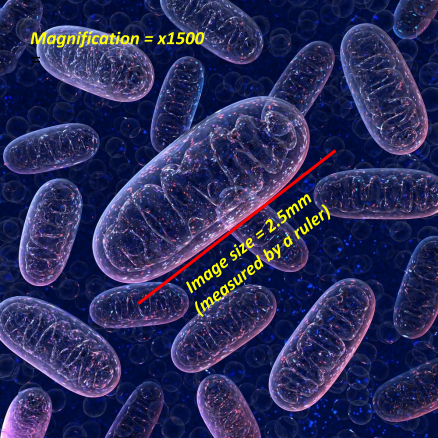Microscopy
Microscopes
You need to know:
The difference between light and electron microscopes.
the difference between __resolution __and __magnification __(lots of people get them mixed up)!
Light microscopes: You will use these in the classroom. Light microscopes use light and lenses to allow you to see things close up (magnified).
Electron Microscopes: These are very big and expensive (so your school won’t have access to one). Electron microscopes use electrons __to produce a black and white picture__ on a computer screen.
Resolution:
Resolution is the shortest distance between two points on a specimen that can still be seen as two different points by the observer.
Magnification:
Magnification is how much a lens (or other optical instrument) can magnify. It is the ratio of the size of the image to that of the object.
Light Microscopes
You will need to know:
how to prepare a slide for a light microscope.
label a light microscope and remember a brief description of what each of the components do.
- Using a pipette, place a drop of water in the centre of the slide.
- Using a scalpel and tweezers, carefully remove one thin layer of onion, trying to get only one or two layers of cells.
- Place the piece of onion in the water droplet using the tweezers.
- Using a pipette, place a drop of iodine over the onion slice.
- Carefully place a cover slide (a thin square piece of plastic/glass) over the onion and droplets. In order to prevent air bubbles from forming, place the cover slide upright on the larger slide and carefully tilt and lower the cover slide onto the water droplets.
- Place the slide onto the microscope stage, making sure the onion is in the centre of the stage.
Magnification
You will need to know:
How to calculate the real size of a cell.
If you are given a picture of some cells, you’ll need to measure the image size with a ruler. Using the equation above, you can easily work out the real size of the cell!
Example:
If you have a magnification of x50 and you have measured the cells image size to be 15mm, you can find the real size in this way:
So the real size of the cell is 0.3mm! Notice that the units haven’t changed.
Converting Between Units
You will need to be able to:
Convert between different units of length.
Converting between different units may seem complicated, but it’s exactly the same as saying ‘there are 100cm in 1 meter’!
There are 1000 millimeters in 1 meter (1000mm = 1m)
There are 1000 micrometers in 1 millimeter (1000m = 1mm)
There are 1000 nanometers in 1 micrometer (1000m in 1m)
1mm = 1000m = 1000,000m
1m = 0.001m = 0.000001mm
An easy way to remember how to do this:
Here is another example of how to calculate the actual size of the cell:
This isn’t a very nice number, so we should convert it to a more suitable unit.
- Name the pros and cons of using light microscopes.
- Your answer should include: Cheap / Light / Moved / Around / Easily / Little / Training / Specimen / Real / Time / Alive / Low / Resolution / Magnification
- Name the pros and cons of using electron microscopes.
- Your answer should include: High / Resolution / Magnification / Very / Expensive / Large / Training / Black / White / Specimen / Dead
- What is the difference between magnification and resolution?
- Your answer should include: Magnification / Object / Zoomed / Resolution / Detailed / Detail / Image
- If an image of a cell has been magnified by a x1000 lens and the image length is measured as 2cm, what is the real length of the cell?
- Your answer should include: 0.002 / 0.002cm
- If an image of a cell has been magnified by a x2000 lens and the image length is measured as 4mm, what is the real length of the cell? Put your answer in micrometers.
- Your answer should include: 0.002 / 0.002mm
